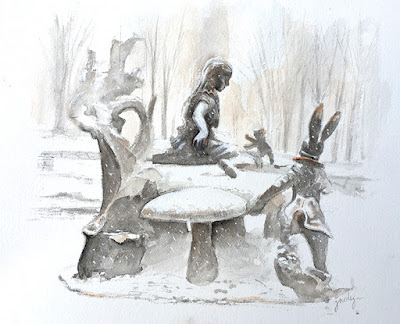
The massive black trunk of an ancient plum tree with bending, twisting branches spans nearly sixteen feet across four gold-leafed sliding panels. The downward thrust of its principal branch is echoed by the parallel reverse movement of two young shoots. Supported on both sides by vertical and horizontal expanses of rock, the old reptilian tree sprouts blossoms, which convey the atmosphere of a cold, early spring and symbolize birth and renewal.
These panels originally formed one wall of a room in the Tensho-in, a subtemple of Myoshin-ji, a Zen temple in Kyoto. During the 1880s, they were sold to a private owner and trimmed at the top to conform to the dimensions of the new owner's home. On the reverse, which formed a wall in the adjacent room, was a composition depicting the Chinese theme of the Eight Daoist Immortals. This was later separated and remounted. It is now in the Minneapolis Institute of Art.
This remarkable painting bears no signature or seal, but the exaggerated bends of the tree and the cubelike crispness of the geometric rocks are idiosyncrasies associated with the signed works of Kano Sansetsu (1589/90–1651). Sansetsu was a pupil and son-in-law of Kano Sanraku (1559–1635), an artist who enjoyed the generous patronage of monks at Myoshin-ji. Sanraku and his adopted heir worked together to decorate rooms in the Tenkyü-in, another Myoshin-ji subtemple, in 1630. Sansetsu must have received the monks' continued support after the death of his father-in-law. The Tensho-in was constructed in 1647, the year in which Sansetsu was granted the honorary title of "hokkyo." He was then fifty-eight years old, and these screens reveal the eccentric and abstract tendencies that characterize his later works.


No comments:
Post a Comment